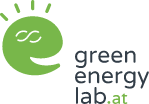Green Energy Lab @ e·nova 2023
On 14. and 15. June the international conference e·nova on the topic "Energy and Climate Change" took place in sunny Pinkafeld. Green Energy Lab was involved in hosting the congress with three sessions of its own.
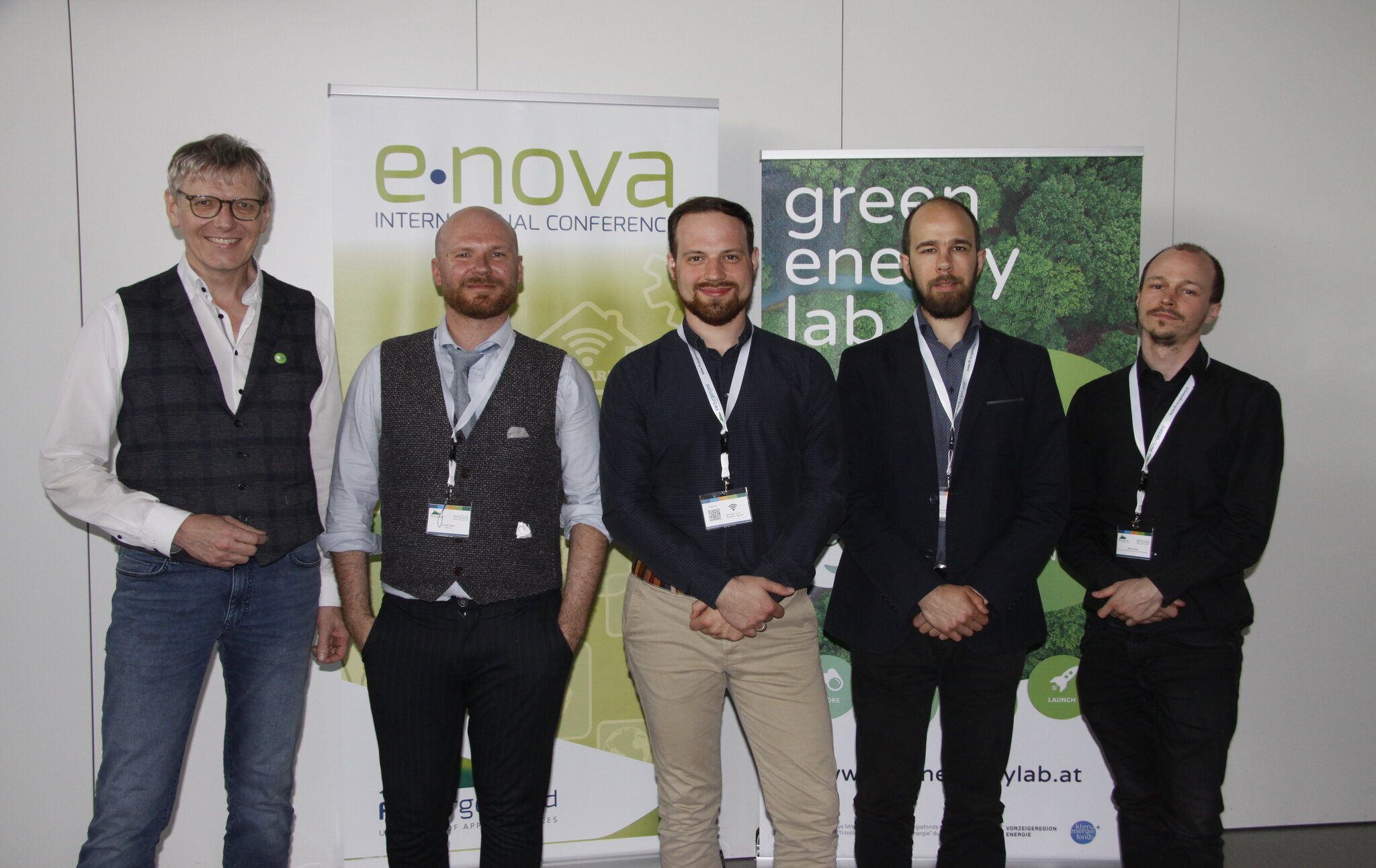
(f.l.t.r.) Christian Kurz, R&D Manager Green Energy Lab; Gerald Zotter, AEE Intec/FH Joanneum; Michael Gumhalter, AEE Intec; Bernhard Kling, Universität für Bodenkultur Wien (BOKU), Thomas Keller, BOKU. © Green Energy Lab
21 June 2023 – The international scientific conference e·nova was aimed at both the scientific community and professional field-oriented experts involved in energy, buildings and the environment. The contributions from the field of application-oriented research and development offered an overview of the state of the art in science as well as of the possibilities and status of the professional and market feasibility of innovative solutions.
As a venue itself, the town of Pinkafeld in Burgenland has contributed a great deal to research in the field of energy and energy management. As an exposition of the FH Burgenland, the Pinkafeld campus has two remarkable real-live research laboratories: the Lowergetikum and the Energetikum, both of which have already contributed to innovations in the Green Energy Lab project portfolio. Green Energy Lab itself again thematically compiled and led three sessions for this year’s e·nova, which mainly presented projects from its own portfolio and made important contributions to Green Energy Lab’s fields of innovation.
“Upgrading Buildings” – “Customer Integration” – “Green Heating and Cooling”.
The first session of Green Energy Lab on Wednesday, June 14, was titled “Upgrading Buildings” and focused on how buildings can become active building blocks of our energy system. These included questions about integrating a fuel cell, weighing low-tech versus high-tech solutions, ways to increase the energy flexibility of buildings, and fault detection in building systems.
In the second session of Green Energy Lab on June 15, innovations on the topic of “customer integration” were in demand. On the level of managing innovation in general, Christian Kurz, R&D Manager of Green Energy Lab, showed how the combination of impact analysis, foresight and the integration of a stakeholder network can increase the accuracy of results. In doing so, he drew on a year of experience already and described in a comprehensible way how the development of the Green Energy Foresight Service sustainably increases the clout of the showcase region.
The other presentations explored the question of what innovative services new technologies could bring to users. One example was the monitoring of elderly and frail people based on their typical energy consumption behavior or a study on the use and acceptance of bidirectional charging among car sharing operators. The last contribution of this session explored the question of how Viennese citizens participate in the digitalization of the energy system. The result: only a very small part of the offered possibilities is used.
After the lunch break, the third session of Green Energy Lab was about “Green Heating and Cooling”. Two papers dealt with thermal activation of building components to make buildings more energy-efficient and energy-flexible, both in new construction and in the course of minimally invasive refurbishment of existing buildings. Very interesting was also the presentation of a simple and inexpensive possibility to control the indoor climate based on prognosis, which has already been implemented in a demonstration object. Another paper was devoted to comparing options for energy storage in solar-energy buildings, such as thermal storage of heat in building components, electrical storage in battery systems, and a combination of both. It was shown how much additional electricity has to be drawn from the grid for a solar energy house over a longer period of time and how much energy can be fed into the grid and what maximum load peaks can be expected for the power grid when drawing and feeding in when using different storage technologies.
Finally, the last paper dealt with the design of a 2-stage heat pump system in multi-storey residential buildings. The main challenge was to ensure the undisturbed usability of the building during the reconstruction.
The conference was well attended overall. The Central Burgenland, which is gladly advertised as “sunshine country”, lived up to its name, especially on the second day of the congress, and showed itself from its best side in terms of weather.
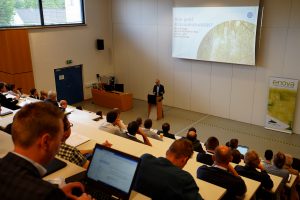
Keynote by Bernd Vogl, Managing Director of the Climate and Energy Fund. © FH Burgenland / Gruber
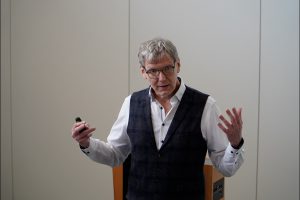
Presentation by Christian Kurz, R&D Manager Green Energy Lab, at e-nova 2023. © FH Burgenland / Gruber

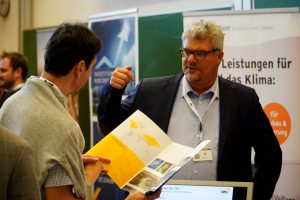
Networking and poster presentation during breaks in the presentations. © FH Burgenland / Gruber
Contact
Ludwig Fliesser
Communications Manager
T: +43 676 471 93 47
E: ludwig.fliesser@greenenergylab.at
